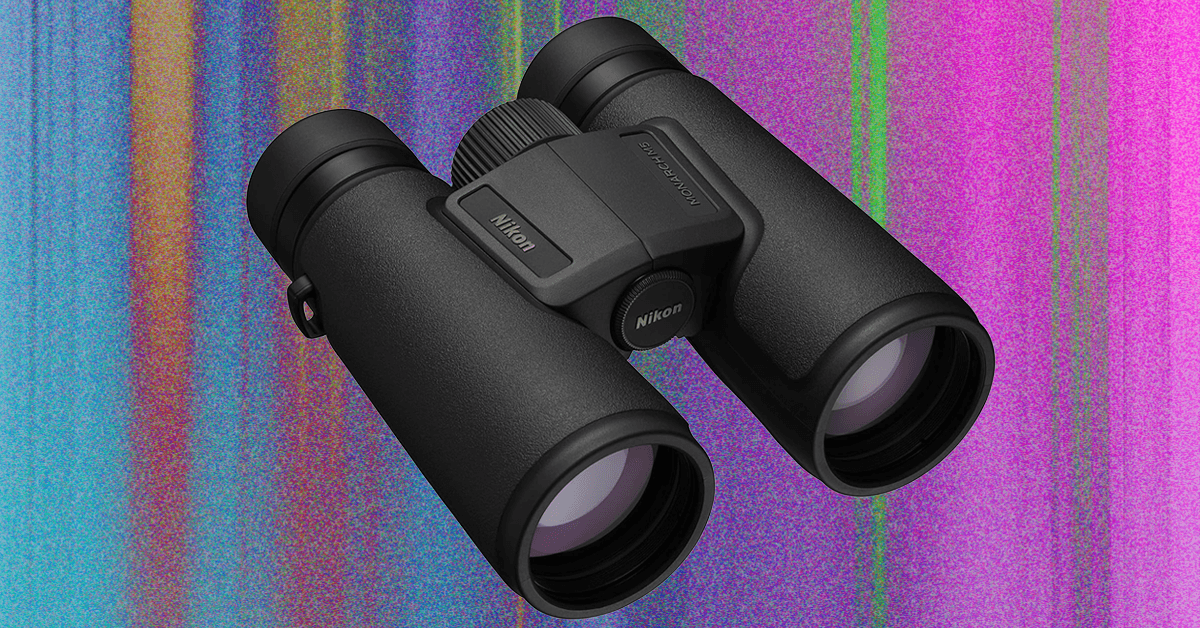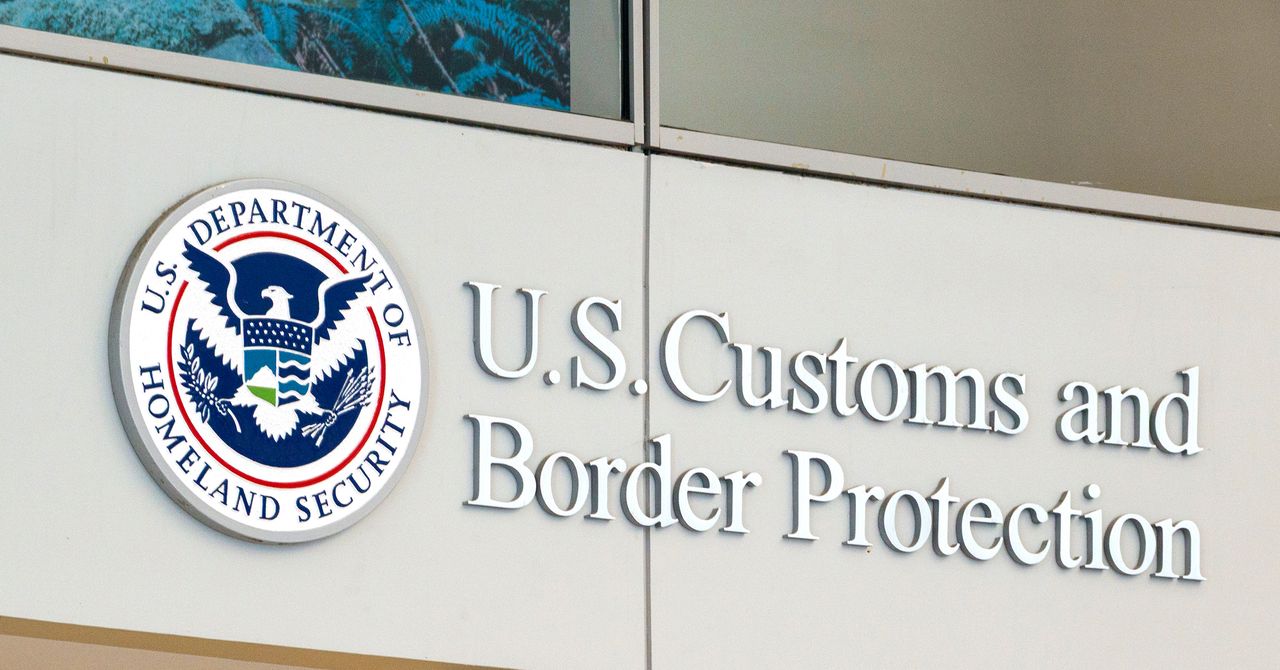Tech
The Best USB-C Cables for Your Phone, Tablet, or Laptop

More USB-C Cables We Have Tested
There are so many cables out there, and plenty of solid options did not make the cut. Here are a few I’ve tested and liked.
Photograph: Simon Hill
Twelve South PowerCord for $30: While I don’t think we want to go back to permanently attached cables and power adapters, they offer a simplicity that could be useful for some folks or situations. The PowerCord from Twelve South is thick and durable-feeling, with a tangle-resistant woven (4- or 10-foot) USB-C cable attached to a compact 30-watt (Power Delivery) wall plug.
EcoFlow Rapid Pro for $21: Kept out of a place above by Anker’s cables, this durable charging cable from EcoFlow is a solid choice if you want fast charging, since it can supply 240 watts. It also has tough metal ends, a lovely woven finish, and comes with a cable tie.
Nomad Chargekey for $29 and USB-C Cable for $25: The Chargekey is a handy wee addition to your keyring with 12 cm of braided cable capable of delivering 240 watts and up to 10 Gbps data transfer, though it can be a little awkward to use. I also tried Nomad’s new Kevlar-reinforced USB-C cable, which is also 240 W but only has 480 Mbps data transfer. It feels durable with metal ends and braided cable, but you can get more capable cables for less.
QDOS PowerMotion Ultra for £40: This USB 4.0 cable is a solid alternative to our top picks for folks in the UK, combining up to 240-watt charging with data transfer speeds up to 40 Gbps. It is relatively thick, feels durable, and comes with a lifetime warranty. I like the braided nylon finish and color-matched cable tie. I also tried the QDOS Powerloop (£20), a handy wearable charging cable that doubles as a lanyard strap. It’s thick, woven, and durable, with screw-off ends that reveal a USB-C cable capable of supplying 60 watts of power and 480 Mbps of data.
Chargeasap Connect Pro for $60: Magnetic tip cables can be handy for kids and folks with dexterity issues. The idea is you stick the relevant tip in your device and then attach the cable magnetically when you need to charge. This one also has an LED display to show real-time power usage. It works best if you leave the tips in your devices, but that means they can’t be charged by regular cables, and the tips are very easy to lose if you remove them. Performance-wise, it’s a standard 100-watt charging cable.
Krafted Connex for £30: I like the idea of a Swiss Army Knife–style charging cable keyring, but the execution here is flawed. It does offer USB-A, USB-C, Lightning, and MicroUSB, but the flip-out plugs don’t have any cable attached, so they are not very adjustable, making it tough to plug into some ports. The Rolling Square InCharge X 6-in-1 Cable above is the same price and works far better.
Scosche Strikeline Premium USB-C Cable for $25: This braided cable comes in various lengths all the way up to the 10-foot cable I tested, and it’s a good alternative to our best long cable above if data transfer is more important to you than charging speed because it offers 5 Gbps data speeds, but only 60 watts for charging.
Ugreen Uno USB-C Cable for $10: I love the smiley-faced Uno line from UGreen, but I assumed the display on this cable would show the charging rate. It does not. It just displays smiley eyes when charging and changes when fully charged. I tested the 6.6-foot cable, but it also comes in 1.6-, 3.3-, or 10-foot lengths. It feels durable and is reasonably priced, but it is rated at a very ordinary 100 watts and 480 Mbps.
Native Union Pocket Cable for $30: This wee braided USB-C to USB-C cable is perfect for slipping on a keyring to ensure you are never caught without a cable. It’s a nice design with braided cables, but you only get around 7 inches, and it maxes out at 60 watts. It is built to last from recycled materials, USB-IF certified, and comes with a lifetime warranty.
Caudabe ChargeFlex for $25: This was our Lightning recommendation, and it’s still good, but the price has gone up and there’s no need to spend this much. It is a thick braided cable reinforced with Kevlar for durability. There is a leather clip you can use for cable management, and the ridged finish on the connectors makes them easy to grip when unplugging.
Cable Matters Gen 2 USB-A to USB-C cable for $10: This is a good alternative to our pick above if you want faster data transfer speeds (it maxes out at 10 Gbps), but it is limited to 15 watts for charging.
Bluebonnet Eco-Friendly Charging Cable for $25: Bluebonnet (an Austin-based studio named after the Texas state flower) made this cable from naturally biodegradable wheat straw. It promises 50,000 plus bends and uses plastic-free packaging. I love the dappled blue finish and the cream ends. They make it easy to pick this cable out of the crowd. It’s nothing special performance-wise, offering up to 60-watt charging and 480 Mbps data transfer.
RUGD Rhino Power USB-C to USB-C for £11: This is a solid option for folks in the UK seeking a tough cable. It has a braided nylon finish and can withstand a minimum of 100 kilograms of tension and 100,000 bends. It can also deliver up to 60 watts.
Casetify Powerthru USB-C to Lightning Cable for $25: This tough, braided cable comes in some fun colors (most notably cotton candy), but it’s kinda pricey for a 100-watt charging cable.
Iniu Braided USB-C Cable for $6: This is a cheap, 6.6-foot USB-C to USB-C charging cable that tops out at 100 watts. Data transfer is only 480 Mbps. One end lights up green when it’s charging.
Lindy USB 3.2 Type C to C Cable for $23: These active cables are suitable for hooking monitors up to your computer, and they support up to 8K at 60 Hz and 4K at 120 Hz. They also support DisplayPort 1.4. I tested the longer 3- and 5-meter variants that max out at 60 watts for Power Delivery and 10 Gbps for data (but they’re out of stock). The shorter cable linked here can go up to 20 Gbps. They work well and feel durable, but they’re a bit pricey.
Satechi USB-C to USB-C Charging Cable for $20: Gear from Satechi always has a classy look, and its braided nylon cables are no exception. This one is 6.5 feet, has a Velcro strap, and is capable of 100-watt charging, with support for PD and QC. Sadly, data transfer is limited to 480 Mbps.
Plugable Thunderbolt 4 Transfer Cable for $70: This active Thunderbolt 4 USB-C to USB-C cable matches our top pick with support for 100-watt charging and data transfers up to 40 Gbps. It is 6.6 feet long and comes with a two-year warranty.
Belkin Boost Charge USB-C for $10: This cable maxes out at 12 watts and 480 Mbps. The basic PVC finish is the cheapest, but you can opt for braided nylon too; both come in black or white at 3.3 or 6.6 feet. These cables are USB-IF certified and work as advertised (I’ve been using one in the car for the last few months).
Power up with unlimited access to WIRED. Get best-in-class reporting and exclusive subscriber content that’s too important to ignore. Subscribe Today.
Tech
The Best Binoculars Will Help You Find the Ivory Billed Woodpecker

You get good magnification, with a waterproof (IPX7 rating) and fogproof design in a lightweight package (11.8 ounces). These also have two things that specifically make them great for kids: rugged construction and a nice, rubberized grip. I can’t tell you how many trees and rocks these have bashed into while around my son’s neck, and they’re still as good as new.
Stargazing Binoculars
When you think stargazing you probably think telescopes, but binoculars can work too, especially larger, higher-magnification models like these Celestron Skymasters. The first thing to know is that these are huge—most of the time you’ll want to use them with a tripod, which is not included in the price (they do include an adapter, which I used to put them on a photo tripod, which worked fine). The Porro prism design (see above), with 15x magnification and 70mm objective lenses, make these nice and bright, perfect for getting good views of the moon. They also work for larger clusters and nebulae. They do work for birding as well, but it’s more like using a spotting scope. They’re nice for digiscoping, though if you’re viewing something reasonably stationary, like water birds.
As with all Celestron binos there’s a nice big, smooth focusing knob, and they also have long eye relief which makes them easy to use with glasses. There is a fair bit of chromatic aberration, especially with bright stars or the moon, but I didn’t find it distracting. In fact, for the price, these provide surprisingly great views.
Image-Stabilizing Binoculars
Image-stabilized binoculars use electronics to smooth out your view, similar to what action cams do to get rid of jittery video. There are quite a few models out there, and we are still testing, but here are a few that have stood out from the pack so far.
Image-stabilized binoculars tend to be expensive, but Canon has quite a few budget models worth considering. They’re simple to use. You just tap the button on top for five minutes of stabilization, or tap again to turn it off sooner. The tech detects your movement and adjusts for it optically, in real-time. The Canon 8×20 IS, its smallest, is doubly pocket-friendly: They’re surprisingly affordable and fit in a large pocket. At 15-ounce plus battery, they won’t weigh you down.
The 8X magnification is good for wildlife and sports, as is the 10X magnification of the only slightly larger Canon 10×20 IS. The 6.6-degree field of view is narrow but wide enough for most situations.
Tech
Social Security Data Is Openly Being Shared With DHS to Target Immigrants

Last week, the Social Security Administration (SSA) quietly updated a public notice to reveal that the agency would be sharing “citizenship and immigration information” with the Department of Homeland Security (DHS). This data sharing was already happening: WIRED reported in April that the Trump administration had already started pooling sensitive data from across the government for the purpose of immigration enforcement.
This public notice issued by SSA makes that official, months after the fact. The notice is known as a system of record notice (SORN), a document that outlines how an agency will share the data it has, with whom, and for what purpose. This notice is required under the Privacy Act of 1974. Normally, SORNs are issued before any data is shared between agencies, giving the public and government officials sufficient time to offer comment. But WIRED found that the so-called Department of Government Efficiency (DOGE) was pulling in data from across DHS, SSA, the Internal Revenue Service (IRS), and state voter data, among other sources, based largely on the US Citizenship and Immigration Service’s (USCIS) Systematic Alien Verification for Entitlements (SAVE) database.
“There are laws that require the government to inform the public about their use of various kinds of databases and other surveillance technologies,” says Adam Schwartz, privacy litigation director at the Electronic Frontier Foundation, a nonprofit focused on digital privacy and free speech. “If the government starts using the database and does not put out the appropriate disclosure and then later does put out that appropriate disclosure, they still have violated the law.”
The Trump administration has gone to drastic lengths to remake the government in its image. A core component of this has been an effort to vacuum up large swathes of data from across federal agencies, many of which were never meant to be comingled. This has frequently happened regardless of the laws, norms, or procedures that normally govern the access and sharing of sensitive data. The SORN from SSA is just the latest confirmation of exactly how much data is being shared in ways experts tell WIRED is “unprecedented.”
Much of this data sharing begins with misinformation about the data at hand. In the early days of the Trump administration, Elon Musk seized on a misunderstanding of SSA’s data to spread the claim that 150-year-old people were receiving benefits. They weren’t, but DOGE capitalized on the idea that the SSA’s systems were inefficient and fraudulent to burrow into the agency’s data and technology systems. In April, reporting from The New York Times found that in an effort to force immigrants to self-deport, the administration was adding them to the SSA’s database of dead people, effectively meaning that their Social Security numbers could not be used to get jobs or access government services. As part of the effort to combine disparate data across the government to verify citizenship and surveil immigrants, DHS recently published a different but related SORN that effectively transforms SAVE into a voter verification system, which experts also warned could be bypassing the requirements of the Privacy Act.
Leland Dudek, who served as acting commissioner for the Social Security Administration between February and May 2025, led the agency when members of DOGE first appeared. Dudek says he was initially supportive of DOGE and acted as a bridge between SSA staff and members of the DOGE team before becoming disillusioned.
Tech
European Commission launches AWS and Microsoft-focused cloud competition probes | Computer Weekly

Amazon Web Services (AWS) and Microsoft’s dominant hold on the cloud computing market is to come under renewed scrutiny, with the European Commission (EC) set to investigate the pair’s activities under the terms of the Digital Markets Act (DMA).
The EC has opened two separate investigations into AWS and Microsoft, which seek to ascertain if the suppliers should be brought in-scope of the DMA by being designated “gatekeepers” in recognition of how much control they wield in the cloud computing market.
As per the terms of the DMA, gatekeepers are typically large tech firms that are able to control access to digital services markets and, in turn, make it difficult for smaller companies to gain a foothold in them.
They must also meet a specific set of market value, revenue generation and user number metrics to be labelled gatekeepers, and are expected to abide by rules set by the EC to encourage competition to thrive within the parts of the digital services market they operate in.
Failing to follow these rules can result in the commission issuing fines of up to 10% of a company’s annual revenue for a first-time violation, rising to 20% for repeat offences.
The EC said, in a statement, that it has decided to pursue this line of inquiry with both AWS and Microsoft, despite neither of them meeting the DMA gatekeeper thresholds for size, user numbers and market position.
The investigations will run for up to 12 months, the EC confirmed, with a final report on its findings set to drop within 18 months.
“Should the commission conclude Microsoft and Amazon fulfil the criteria to be designated as gatekeepers for their cloud computing services under the DMA, Amazon and Microsoft would have six months to ensure full compliance of their designated cloud computing services with the DMA obligations,” the EC said in a statement.
Computer Weekly contacted representatives from AWS and Microsoft for a response to the European Commission’s plans, with both firms returning statements that suggest they are confident the investigation will prove that neither has any case to answer.
In its statement to Computer Weekly, an AWS spokesperson warned that any attempt to label the members of the cloud computing community as “gatekeepers” may serve to stifle competition in the European tech market.
“We’re confident that when the European Commission considers the facts, it will recognise what we all see – the cloud computing sector is extremely dynamic, with companies enjoying lots of choice, unprecedented innovation opportunity and low costs, and that designating cloud providers as gatekeepers isn’t worth the risks of stifling invention or raising costs for European companies.”
Meanwhile, a spokesperson for Microsoft told Computer Weekly the company is ready to engage with the investigation. “The cloud sector in Europe is innovative, highly competitive and an accelerator for growth across the economy. We stand ready to contribute to the European Commission’s market enquiry,” they said.
Even so, Teresa Ribera, executive vice-president for the EC’s Clean, Just and Competitive Transition initiative, said cloud computing services are “vital for Europe’s competitiveness and resilience” but the market for them needs to be built on “fair, open and competitive terms”.
She continued: “That’s why today we are opening investigations into whether Amazon and Microsoft’s leading cloud computing services, Amazon Web Services and Microsoft Azure, should be subject to the Digital Markets Act’s obligations.”
She also confirmed the EC would launch a third related investigation into whether the DMA is an effective tool for tackling issues of anti-competitiveness and fairness within the European Union’s (EU) cloud computing sector.
This, she said, will look at whether the DMA’s existing rules should be updated so Europe can “keep pace with fast-evolving practices” in the EU cloud market.
This investigation will, the EC confirmed, involve seeking input from “relevant market players” to assess the effectiveness of the DMA to tackle issues such as obstacles to interoperability between competing cloud services and incompatible contract terms.
Nicky Stewart, senior advisor to the pro-cloud market competition advocacy group, the Open Cloud Coalition, welcomed the commission’s decision to probe the inner workings of the European cloud market, before sharing details of the specific areas the investigation should cover.
On this point, she specifically called out Microsoft’s controversial stance on charging customers more for running its software in competing cloud environments, which has already seen it subject to regulatory and legal scrutiny elsewhere in the world.
“These investigations are a good start for cloud customers. To achieve Europe’s sovereign ambitions, Microsoft’s anti-competitive approach to cloud licensing needs to be addressed as a priority,” she said.
“We also need to dismantle barriers to data portability and interoperability. These practices promote lock-in, undermine digital resilience and foreclose competition. The commission’s efforts have to address these issues if we want a thriving and competitive cloud market.”
News of the European Commission’s investigation into AWS and Microsoft comes hot on the heels of the UK Competition and Markets Authority (CMA) concluding its own anti-trust investigation into the two firms, as part of a wider probe into the inner workings of the UK cloud infrastructure services market.
-

 Tech1 week ago
Tech1 week agoFrom waste to asset: Turning ethanol production CO₂ into jet fuel
-

 Tech3 days ago
Tech3 days agoNew carbon capture method uses water and pressure to remove CO₂ from emissions at half current costs
-

 Politics5 days ago
Politics5 days agoBritish-Pakistani honoured for transforming UK halal meat industry
-

 Sports3 days ago
Sports3 days agoTexas A&M officer scolds South Carolina wide receiver after touchdown; department speaks out
-

 Business3 days ago
Business3 days agoThese 9 Common Money Mistakes Are Eating Your Income
-

 Tech1 week ago
Tech1 week agoSecurity flaws in portable genetic sequencers risk leaking private DNA data
-

 Politics6 days ago
Politics6 days agoInternet freedom declines in US, Germany amid growing online restrictions
-

 Fashion4 days ago
Fashion4 days agoAfter London, Leeds and Newcastle, next stop Glasgow for busy Omnes














-SOURCE-Caramel-Quin.jpg)




